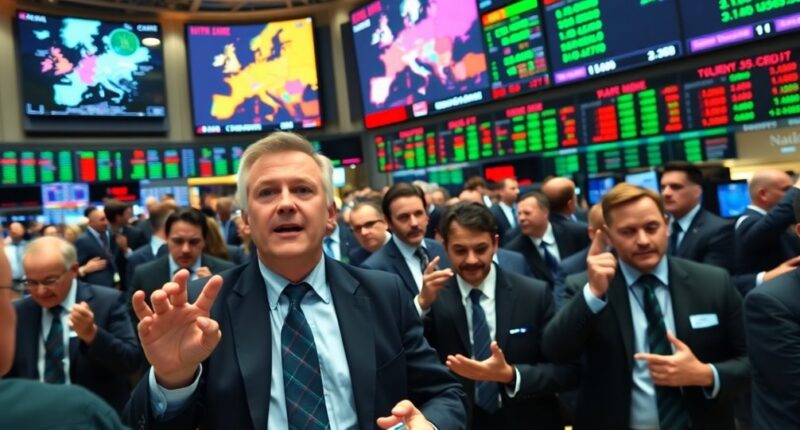European stocks are showing some resilience, even in the face of disappointing retail sales figures from Germany. This upward trend is largely influenced by strong corporate earnings and supportive monetary policies. While sectors like technology and industrials are performing well, you might wonder how long this momentum can last amid economic uncertainties. What factors are really driving this positive sentiment in the market?

European stocks edged up as strong corporate earnings and supportive monetary policies fueled optimism among investors. Despite disappointing retail sales in Germany, which raised flags about consumer spending, the DAX index climbed 0.3%. The CAC 40 in France gained 0.5%, while the FTSE 100 in the UK rose 0.4%. These gains reflect a broader sentiment across the markets, driven largely by robust corporate performances and favorable monetary conditions.
You might've noticed that sectors like household goods, industrials, technology, and insurance led the charge, all achieving gains of over 1%. Companies like Novartis and Salvatore Ferragamo significantly contributed to this positive momentum. Novartis saw its stock rise by 4% following impressive quarterly results, while Salvatore Ferragamo surged 6% after an encouraging sales report. These results suggest that, despite some economic indicators pointing to caution, many companies are thriving.
The European Central Bank's monetary policy has also been a key factor in driving stock gains. With interest rates cut five times since June, expectations for further easing create a supportive environment for equities. Inflation rates in the eurozone have fallen to near the ECB's 2% target, which helps maintain favorable economic conditions. Even though GDP growth remains slow, it's in a better position than last year, providing a glimmer of hope for investors. Additionally, a projected 9% total return for the STOXX 600 in 2025 indicates a cautious yet optimistic outlook for European stocks.
However, you should keep an eye on the broader economic landscape. Trade uncertainty, particularly regarding potential tariffs and political instability in countries like Germany and France, poses risks. This uncertainty can affect market sentiment, as evidenced by the cautious outlook from companies like SKF, which forecast a decline in organic sales due to market conditions.
Despite these risks, the current earnings season has been beneficial for market sentiment. Strong earnings from firms like Adidas and the positive outlook for small- and mid-cap stocks indicate potential for growth. Lower interest rates and increased mergers and acquisitions activity can boost these segments.
Moreover, global influences play a crucial role. US economic policies and trade decisions can significantly impact European markets. Currency fluctuations, particularly a weaker euro, can benefit European companies with international sales, while volatile oil prices driven by geopolitical tensions can further complicate the scenario.
As you navigate these markets, staying informed about these dynamics will empower your investment decisions.









